Kempinski Korner February 2023

Some say sharks are the apex predator in the ocean but it’s no doubt humans take the overall role on planet earth. As an apex predator one would think bonsai artists have a leg up on designing an apex for a bonsai tree but this is an area I have seen some bonsai enthusiasts struggle to accomplish.
The Apex – Let’s Get to the Top of This
The apex of a bonsai tree is simply the top. Understanding how to design an apex though will go a long way to creating the design image you would like to portray. Let’s take a look at the two extremes to see if I can make my point: an alpine conifer and a tropical banyan.
The Alpine Apex – An alpine conifer growing on a mountain where there is heavy snow load will have a difficult time growing a wide apex. The wild weather extremes and snow at the top simply break off any branch that tries to get too audacious. The cold and strong winds combined with short growing seasons and perhaps even lightning strikes mean the tops of an alpine tree might even be dead. Consider figure 1 showing trees on top of Mount Mitchell, North Carolina. The apexes are very slender and barely make a dome.

In Figure 2 consider this tree in the Italian alps. It’s one of the oldest trees in Europe at 1,200 years old. The apex is long dead but due to the dry air at high altitude the dead apex has desiccated and been preserved. Age then is also a factor in designing an apex. Young trees will have a slender apex. Older trees will have a wider one. But even a really old mountain trees like this one has a slender top. The oldest trees in the world in the mountains also exhibit this trait.
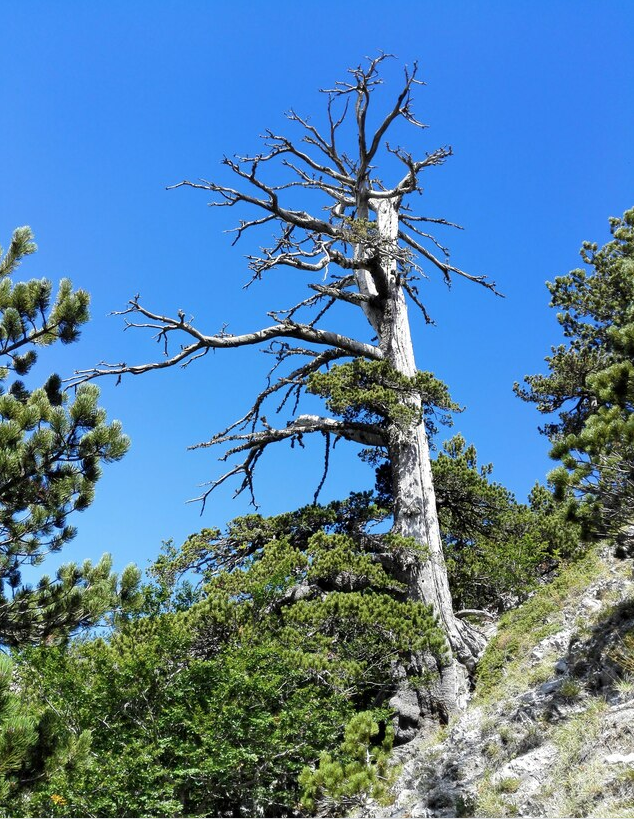
Do a Google search of Bristle Cone Pine like I did in Figure 3 and see the dead wood tops and slender apexes. The Methuselah Bristle Cone pine has perhaps the most prototypical of these shapes.
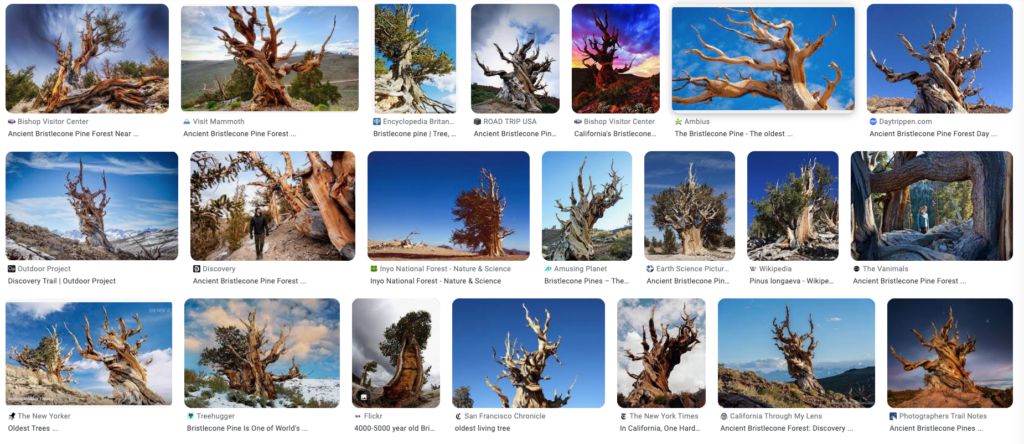
The tree species also makes a difference in apex morphology. The alpine trees are usually conifers but not always. For example, let’s go down in altitude a bit to the valleys. Can a deciduous tree make a dead or slender apex? Sure. There is tremendous variety in nature. This Oak tree in Figure 4 was growing in a valley golf course in North Carolina. Lightning probably caused the dead apex. Note however, the live part is trying to make a rounded crown. Which is a good segue to discuss the opposite extreme of slender alpine apex – that is the wide tropical apex.
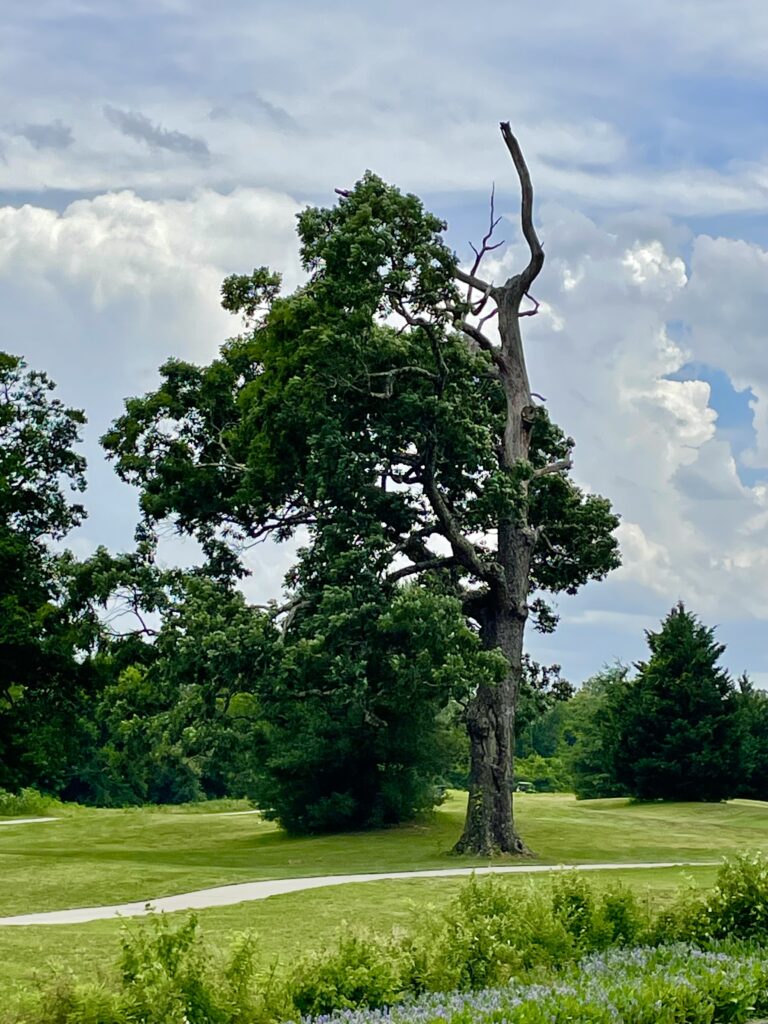
The Tropical Apex – Tropical trees usually have long growing seasons and extend quickly to compete with other fast growing trees for sunlight. As a result they usually develop very wide and rounded domes, but they typically don’t grow very tall as most tropical locales have to endure hurricanes and cyclones. Therefore the prototypical tropical apex is a banyan fig tree where the trees apex is much wider than the height.
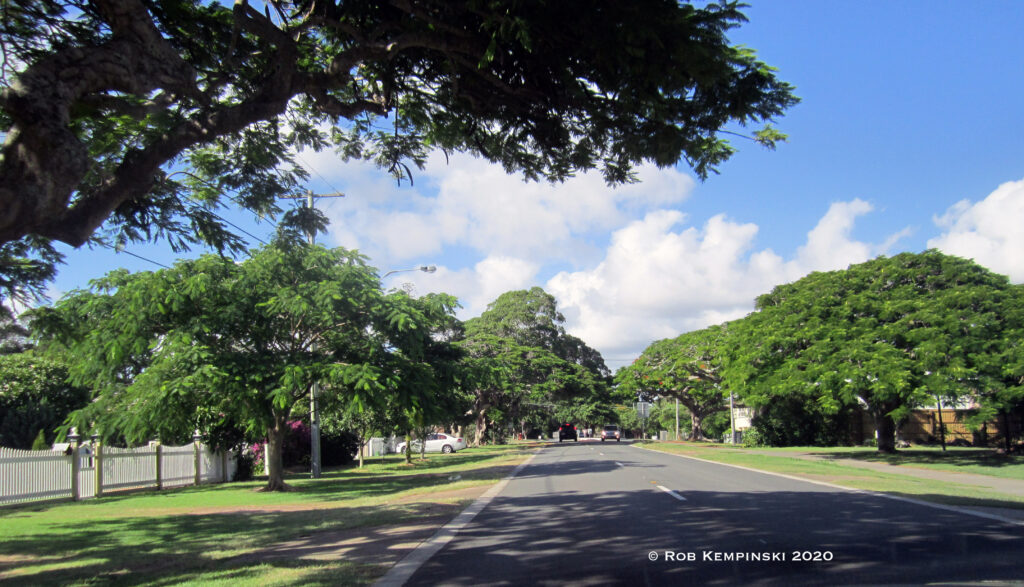
Some tropical trees have such wide apexes they merge to create a canopy that block out all the sun to the bottom of the forest. This gives those trees a leg up in their evolutionally path but creates a whole ecosystem that encourages other life forms to develop in the low light levels under the dense wide top. The West Bengal Great banyan is the world largest above ground tree and its top covers 3.5 acres. It’s located in the Acharya Jagadish Chandra Bose Botanical garden in Howrah, India.
Implications on Bonsai – The apex of a tree can range anywhere between the dead skinny top to the wide banyan umbrella. Everything in bonsai design depends on the design goal of your tree. As a bonsai artist we are not just trying to mimic a natural tree but rather make a rather unnatural rendition of it in a pot. While a natural design could be a goal it is not the only one. When selecting a design, decide if you are going skinny or wide or somewhere in between. Consider the species and where the tree is to be growing. Making a skinny dead top on a fig is going to take a lot of maintenance because the tree is not programmed to grow that way. Consider your garden’s microclimate. It will be tough to keep a deadwood apex for a long time in a rainy tropical climate. Making a dead apex on a bougainvillea is an exercise in futility as the dead wood just doesn’t last. The wet dry cycle wrecks havoc on deadwood. I’ve had exposed heartwood on buttonwoods, juniper and ilex just rot away after 20 years.
If you opt to design a tree with a rounded apex, make the tree grow into a dome in silhouette. Imagine the branches are emanating from a pin cushion and the apex is full of smaller branches going up in all directions.

If you make a skinny apex on a tropical species you might have a design that sends an image of a sick tree. Is it desirable? Maybe, but it is a risky design goal.
One interesting observation I have made by studying the Japanese Black Pine trees in the Kokufuten albums and touring Japanese bonsai gardens is the majority of the exhibition pine trees are wider than the tree is tall. Pine trees don’t typically grow this way in the wild unless hammered by the elements. Yet this is what artists strive to attain to create a mature, healthy looking bonsai. It’s something to ponder and remember there is nothing natural about a bonsai tree.
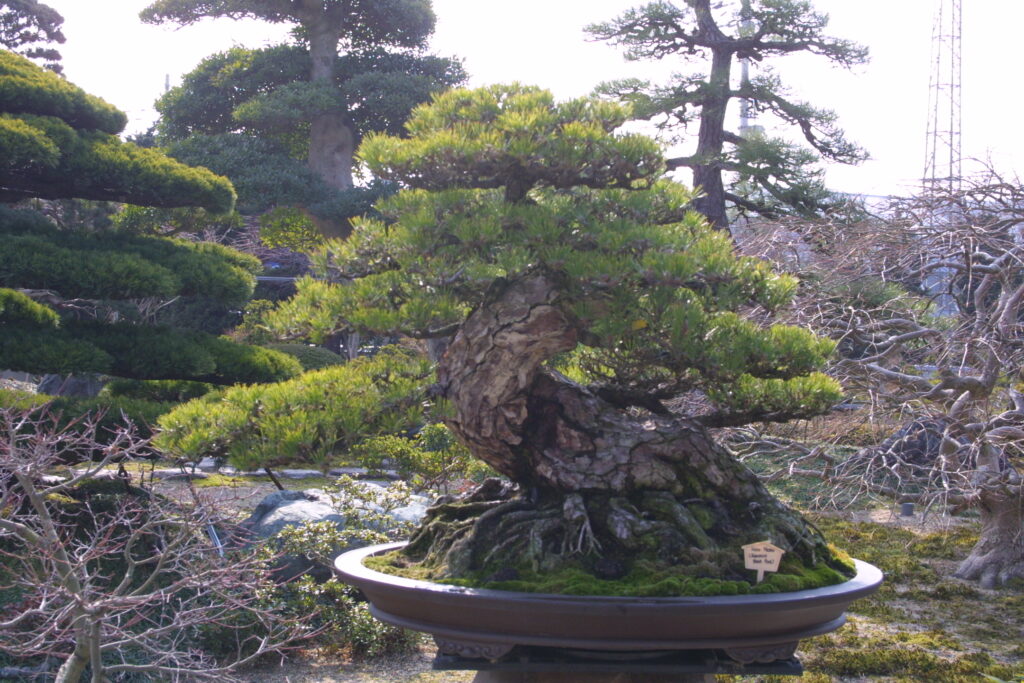
If you want to get creative consider multiple apexes on a tree. This is especially applicable for multi-trunk plantings.
How a bonsai artist shapes the apex will go a long way to setting the emotional construct of the tree. Don’t just let it happen – prune and wire towards a design goal.
